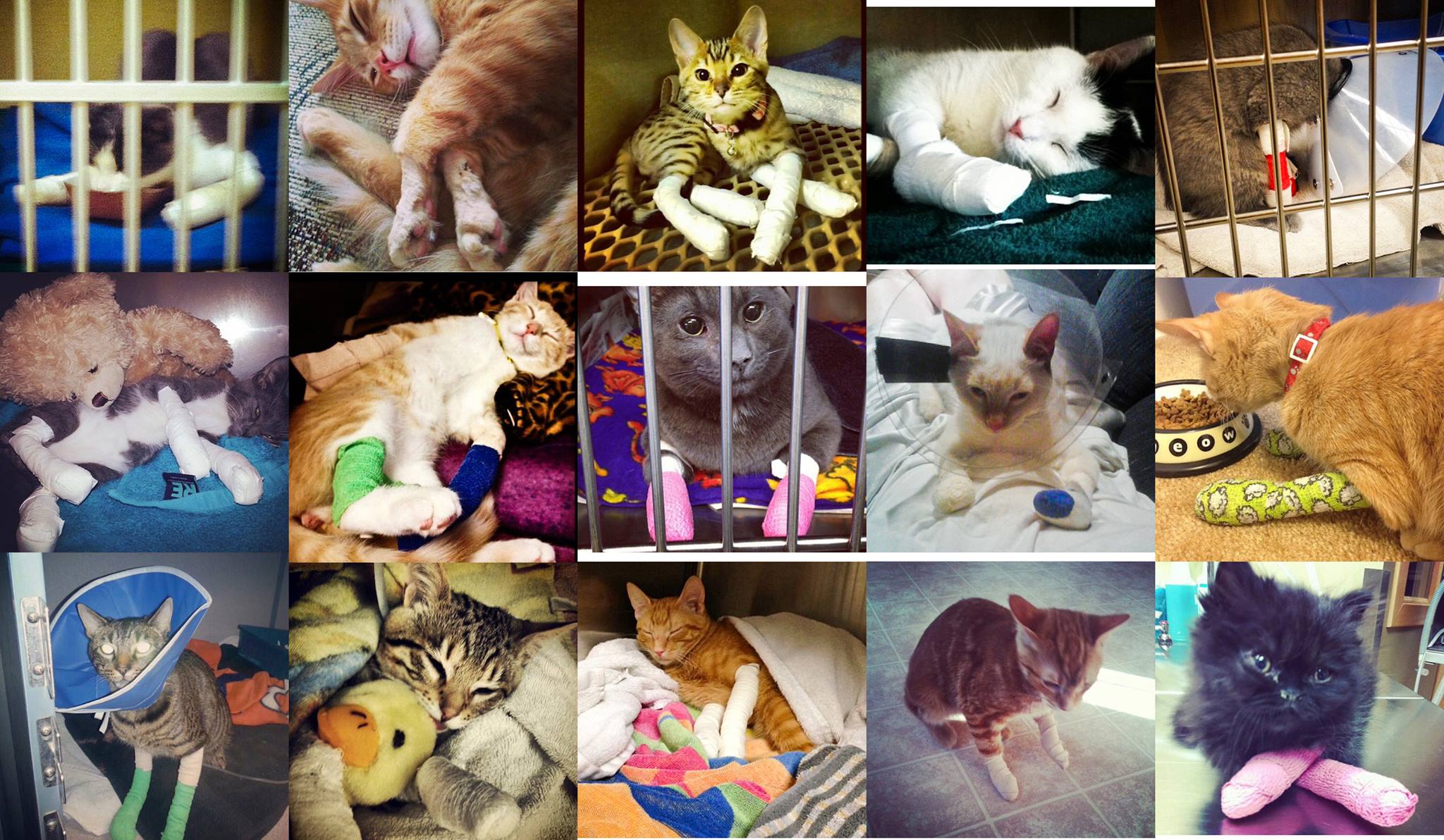——————————————————————————————-
December 2020
A recent study showed that declawed cats have higher levels of cortisol in their bodies than cats with their toes and claws.
Higher levels of cortisol is an indication of chronic stress.
Without a doubt, declawing harms the physical and emotional health and well-being of a cat.
Cats are stoic and they silently suffer from walking on their amputation sites.
Please take a minute to sign our petitions to Dr Pol, Houston Humane Society, Erie declawing vets and The ANNA Shelter, AAHA, Fear Free, ASPCA, West Michigan declawing vets,
Here are the details of this study that was presented in AAFP’s 2019 conference. Link to the study and info below. https://journals.sagepub.com/doi/full/10.1177/1098612X19895943
Quantification and Evaluation of Cortisol in Feline Fur and Claws: A Novel, Non-Invasive Measurement of Chronic Stress in Cats
Elena T Contreras, Michael R Lappin
Department of Clinical Sciences, Center for Companion Animal Studies, Colorado State University, Fort Collins, Colorado, USA
Email: happitarianvet@gmail.
Purpose: The goal of this study was to determine whether feline nail and hair cortisol concentrations could be used as a measure of chronic stress in cats. The objectives were to validate an enzyme immunoassay (EIA) to determine cortisol concentrations in cat nails and hair, and to evaluate associations among cortisol results and behavioral and medical stress indicators.
Summary of background/objectives, methods, results and conclusions: Chronic stress, implicated in feline behavioral and health issues, is often unrecognized and inaccurately assessed. Cortisol concentrations are frequently measured in serum, saliva, urine or feces in an attempt to estimate stress. However, cortisol concentrations in these bodily fluids and feces only reflect short-term changes (<24 h). Estimating chronic stress necessitates quantification of cortisol over longer time periods. Since cortisol accumulates in hair and nails over weeks to months, increases in hair and nail cortisol concentrations might be indicators of chronic stress. Feline hair and nail cortisol concentrations have not yet been assessed by EIA.
Fifty adult owned or community cats were included in this study. Patches of fur (2 x 2 cm) were clipped from various body areas, and front and rear nails were clipped. A commercial laboratory extracted and quantified the cortisol from the samples and validated a commercial EIA kit. Medical and behavioral questionnaires were designed, and these were completed by the owners of the owned cats. Correlation and multiple regression analyses were conducted to assess the relationship between average hair and nail cortisol concentrations and associated factors identified from the questionnaires.
The EIA was successfully validated for the quantification of cat hair and nail cortisol. Large variations in hair cortisol concentrations were detected within cats depending on the body location from which the hair was clipped, hair type and portion of hair sampled, while nail cortisol concentrations were generally consistent within each cat. Overall cortisol concentrations are listed in Table 1.
|
Table 1 Cortisol concentrations (pg/mg)

There was a positive correlation between hair and nail cortisol concentration, r = 0.84, P <0.001. Univariate analysis for nail cortisol concentration identified the following significant associations: being front declawed (P = 0.001; 95% CI 1.1–4.0); unkempt fur (P = 0.003; 95% CI 0.6–2.9); chronic illness (P = 0.02; 95% CI 0.2–2.2); and age (P = 0.02; 95% CI 0.02–0.2). Univariate analysis for hair cortisol concentration only identified one significant association: being front declawed (P = 0.001; 95% CI 13.5–50.6).
Multivariate regression for nail cortisol concentration identified three significant associations: unkempt fur, litter box issues and being front declawed (P = 0.006), with an R2 of 0.37.
This study suggests that quantitation of nail cortisol by EIA may prove to be an accurate measure of chronic stress in cats. This noninvasive, objective tool could be used to recognize chronic stress in individual cats so that interventions could be started and monitored, ultimately improving animal welfare. In contrast, the hair cortisol variation in cats renders use of this medium inaccurate.
This work was funded by the Winn Feline Foundation/Miller Trust as the 2017 New Feline Investigator Award in memory of Fred Jacobberger.


